What can I use to keep greenhouse warm passively
I know people put 55 gallon barrels inside their greenhouse to keep it warmer at night because the barrels of water absorb heat during the day and release them at night. My little greenhouse is small and can only hold two 5-gallon containers. What material will work better than water in absorbing heat during the day so that I can maximize the heating capacity of the 5-gallon containers. Does anyone know if tar absorb more heat than water? With the tar containers, I will not have to paint the outside. :) Thank you for any suggestions.
Comments (40)
steve333_gw
10 years agolast modified: 9 years agoA somewhat long topic, but here are some ideas:
The most efficient heat storage happens if you can move a material through a phase change, vapor to liquid, liquid to solid, etc. To do that efficiently though, requires some planning, and choosing materials wisely so that phase change can occur with the temps you have at hand.
For typical GH temps, there are only a couple of materials which can do this. Some specialized salts which have melting points near to room temps, and water vapor (if you can play with ambient temps some).
You don't say what temps you are working with here, but if you can find some thermal salts with a melt/freeze temp that would work for you, a 5g bucket of those would store way more heat than water or rocks. Might be quite expensive, and there is some talk that the lifespan of these salts is not that long. But should pack more BTUs into the same volume.
Another system is the SHCS, which uses air tubes in the soil below the planting bed to run hot moist air from the GH during the day. The temp diff causes the humidity in that air to condense in the tubes giving off a phase transition heat. Much more efficient that just heating rocks, water or the like, but quite a bit of work if you did not install it during construction, and I am not sure how it would work in a small GH (which is what I assume you have given you only have room for 2 5g buckets).
You might want to research the thermal salts, and look into the SHCS design to see if one of these phase change systems can be of use in your GH.
Alternatively, there are other types of containers for water as a thermal mass in a GH that might work for you. They make black plastic bags that are relatively flat and can be hung from a wall. They take up less floor space and offer more surface area than bucket/barrel type containers. Although they won't offer a phase change type efficiency.
Of course, having sufficient surface area on your storage media to capture all the heat you want to store needs to be taken into account as well.
HTH
ange2006
Original Author10 years agolast modified: 9 years agoWow - all these ideas are new to me. I'll have to read this again when I'm not so sleepy and do more research. Thank you for your reply, Steve.
Related Professionals
West Milford Landscape Architects & Landscape Designers · Harrison Landscape Architects & Landscape Designers · Kyle Landscape Architects & Landscape Designers · Maple Heights Landscape Architects & Landscape Designers · Billerica Landscape Contractors · Federal Way Landscape Contractors · Franklin Landscape Contractors · Kearny Landscape Contractors · Laguna Hills Landscape Contractors · Mashpee Landscape Contractors · Salem Landscape Contractors · Belleville Solar Energy Systems · Torrington Solar Energy Systems · Wasco Solar Energy Systems · Whitney Solar Energy Systemsmckenziek
10 years agolast modified: 9 years agoUnless you do something fancy like what steve outlined, nothing works better than water. The details of the container matter somewhat, too. You want good contact between the surface which absorbs the suns rays and the water. So if you have thin-walled containers, and paint the outside black, that should work OK.
--McKenzie
livelydirt
10 years agolast modified: 9 years agoAs you see, I'm in Zn4 and have been wondering about preventing the barrels of water from freezing in my "closed" season by simply adding salt to the water and creating a brine. The stronger the brine, the greater the frost protection. I'm sure Mr. Google will give me the specific gravity strengths I need for -40 protection. Anyone else tried this approach? The latent heat will be useful in crop maintenance into late fall & early winter, but at some point I will likely just have to give up... and wait for spring again.
oldlady59
10 years agolast modified: 9 years agoI highly recommend going to your library and checking out the book titled , The Solar Greenhouse Book, Edited by James C. McCullagh. If your local library don't have it ask if they can get it through a inner library loan. I am planning on getting mine built this spring and this book has gave me so many ideas on ways to help hold the heat in for the nights.
curlygirl
10 years agolast modified: 9 years agoSince it sounds like you already have a greenhouse, I would look into Phase Change Materials. Water is a PCM but as you already stated, it takes up too much space. There are PCMs like Steve333 mentioned that take very little space. Rgees sells them and can help you find the right combination for your situation. They take little space and if you have circulation fans to move the air around them, they work very well. They have a greenhouse on their blog that isolated the PCMs and ran a fan through it: http://greenhousefashions.blogspot.com/
If possible, you could dig down below ground to take advantage of the earth's steady temperatures. As Mike Oehler writes in his Undgeround Greenhouse book, why not take advantage of all the thermal mass our greenhouses are sitting on? To do that, you need to dig down a few feet. This creates a cold sink that lets the coldest air sink below the plants and get warmed by the earth below the frost line.
Best of luck!
ange2006
Original Author10 years agolast modified: 9 years agoCombining all your suggestions, I am thinking of using 2 black metal 5 gallon containers partially buried (8" is the most I can dig down). Fill them with water saturated with salt. This is just my temporary greenhouse for this winter and the next winter.
Hopefully, in about two years, I will have my large, permanent greenhouse built. Thanks for the book and link suggestions on solar greenhouse.
I'm in Arizona. The coldest I've experienced so far is zero degree F. So I don't have to worry about -40F. Thanks everyone for your suggestions.
oldlady59
10 years agolast modified: 9 years agoI think this would help heat the water free. have this recirculate from barrel to what you will see on utube and back to barrel.
Here is a link that might be useful: Solar Water Heater DIY w/black water hose - fast hot water (158F+)
steve333_gw
10 years agolast modified: 9 years agoAnge2006, a couple of thoughts:
I am not sure (at first ponder) why you would sink the 5gal containers in the ground. If it is air you are trying to heat overnight I think it would be better to place all the container in the air.
Also, you might want to consider using 5gal plastic containers if they will contain salted water or be buried. Mostly as a precaution against the metal rusting/corroding and leaking salt into your GH soil. The metal will have two things working against it, salt water on the inside and moist soil on the outside. It will not last as long as you might hope/think, and leaking salt into your soil would not be a good thing.
curlygirl
10 years agolast modified: 9 years agoYou may want to try Eutectic aka "Glauber's Salt",:
http://www.allanstime.com/SolarHome/Eutectic_Salt/
David Allan created a Eutectic Salt Chamber to heat his house in Utah using Dr. Maria Teklas' experiments:
http://www.allanstime.com/SolarHome/index.html
What he (or maybe it was someone else -I can't remember) realized is that it cannot be just Eutectic Salt. There is another ingredient that is mixed with it or else it stops performing after awhile. I considered trying to mix it myself at one point because the salt is pretty cheap but I took my greenhouse design in a different direction. PCMs that you buy premixed for your temperature range in the appropriate containers appealed more to me but I have yet to invest in one myself. I am going with the SHCS system that Steve333 mentioned. Look into it for your permanent greenhouse -for 1200 square foot of space, you can heat a greenhouse with the electricity that it takes to power a refrigerator.
http://www.roperld.com/science/ymcasolargreenhouse.htm
http://www.sunnyjohn.com/indexpages/shcs_faq.htmsand_mueller
10 years agolast modified: 9 years agoNone of this would prevent loss of tender plants in a cold climate. None of this does much to heat the air. For serendipity I fill plastic milk gallons with water and then dye the water black. At least the sun somewhat heats the water. I have a drum in the gh which collects rainwater and warms it somewhat for watering the plants, but have little regard for it in terms of keeping my plants from freezing.. In terms of growing efficiency I'd rather have a cover to put over the house on cold nights than a space consuming or costly storage system.
curlygirl
10 years agolast modified: 9 years agoSand_mueller, why do you think none of these suggestions will heat the air? That is exactly what PCMs and SHCS do. They absorb heat when it is plentiful and then releases it when it is not. They are a lot more effective than water. How effective overall depends on many factors such as the proportion of air volume to a SHCS heat sink or PCMs, how insulated your GH is, etc. You can order samples of PCMS to try out and they would not take up much space while also being more flexible design-wise than 5 gallon buckets since they are smaller, lighter, can be hung up, etc.
SHCS systems are not necessarily expensive or space-consuming. We all have our budgets and our goals for greenhouses and SHCS might not fit ange2006's needs.
However, since ange2006 is planning on building a greenhouse in the near future, it is worth a look at. Especially since it is an investment upfront that provides super efficient heat indefinitely. The system can pay for itself rather quickly. As for the space it occupies, it goes under the floor of the greenhouse, freeing up space for growing.I agree that a drum of rain water won't do a whole lot. In order for water to be very effective at keeping a greenhouse from freezing, you would nearly fill the space with water barrels and the available space for plants wouldn't be ideal because you can't let the plants shade the barrels.
I would also suggest taking a holistic approach to passively heating a greenhouse. A southern exposure with the glass angled for your latitude, insulating the northern wall and perhaps the eastern and western ones as well, highly insulated and air-sealed building envelope, lots of thermal mass, and a cold sink to drain the coldest air away from your plants.
curlygirl
10 years agolast modified: 9 years agoA cold sink is a design element in a greenhouse used as a strategy to keep the coldest air away from where it can do harm using thermodynamics. Simply put, you dig a hole, trench or pit that is lower than where your plants are for the coldest air to sink into. If it is below the frost line, then the steady temperatures of the earth warm the cold air in the pit, it then rises, and other cold air sinks down, is warmed then rises and so on. Mike Oehler talks about this in his Earth-Sheltered Solar Greenhouse book. He stumbled upon it when he was trying to make a large cold frame/greenhouse more comfortable to work in. He dug down the pathways so he could stand up while working. The coldest air sank down by his feet while the warmest air was right by the plants.
In the greenhouse we are building, I have tiered raised beds to take advantage of the southern sun which also creates a slope so the coldest air slides away from my fruit trees. The cold air collects down inside the aisle (which is just below grade) and then settles to an even lower point which is level with my basement and is next to my root cellar. I am using a SHCS but is not hooked up yet. So far, in Massachusetts, my greenhouse has not dipped below 49 degrees (5 degrees outside) and that is with no heat. -Just tons of insulation, lots of thermal mass, super efficient windows and a passive solar design. In another month or so we'll have the electric set up and we can start using the SHCS. In the meantime, I am enjoying how well passive solar design works.
ange2006
Original Author10 years agolast modified: 9 years agoHaha, how about that. The location where I want to put my new greenhouse already has a trench 1.5 ft wide and 1.5 ft deep. I will take advantage of that. Thanks.
veggiegal1
10 years agolast modified: 9 years agoI want to build a greenhouse here in Iowa. I have been looking at a heat sink or rocket mass stove for heat. The heat sink collects heat during the day in the ground or below your plant beds then slowly releases it at night. In extremely cold places they hoop and cover the beds with the heat sink below them. I think I will have the rocket mass heater for my back up in case I don't have a sunny day. I am no expert by any means, but these two methods seem to look possible as it gets below zero here quite often and some days we don't have lots of sun, so I would need two sources of heat. Also the walapini or pit greenhouses look interesting too. Too many choices. LOL
sand_mueller
10 years agolast modified: 9 years agoA response to Curly Girl: My 600 sq.ft. combination of a partially sunken twinwall structure and a 200 ft. sq. structure glazed with hinged used single paned window glass. They are linked through a 12 ft. opening. The twinwall part is reasonably tight, the window glass part is has lots of tiny air gaps. I have calculated the thermal performance of my structure from professional tables. if it is zero degrees outside, which it was last night, I must input 24,000 btu per hour to raise the temperature 35 degrees inside. Are you seriously telling me that any kind of passive storage will add 24,000 btu's to the atmosphere inside my greenhouse? Lets say your structure only loses half the heat mine does...I doubt you can get 12,000 btu's from passive storage either. I like warm ground quite a bit, but leaves and stems are aerial structures.
curlygirl
10 years agolast modified: 9 years agoA SHCS is not a passive system. These explain some of the physics of the system:
http://www.fao.org/docrep/T4470E/t4470e0c.htm
http://www.builditsolar.com/Projects/Sunspace/EarthTube2004-03-02gsharan.pdf"Reasonably tight" is not so great. You can have tons of insulation but if you have air infiltration -as you do with lots of tiny air gaps"- your insulation is not doing much. A third of the HVAC used to heat most modern residences in the U.S. is due to air infiltration. In greenhouses, air infiltration is hard, however, because most are made with glass or polycarbonate with lots of seams. I think putting a cover over the structure as you earlier suggested is a great, inexpensive way to minimize air infiltration on cold nights. A 600 square foot greenhouse might make it challenging to do, however. Especially if weather conditions get tricky.
steve333_gw
10 years agolast modified: 9 years agoI think you are viewing SHCS incorrectly. SHCS is not like a heater, that you can flip a switch and get heat out on demand.
Certainly over a prolonged cloudy/cold stretch, a SHCS system will not keep a GH warm enough. However, in generally sunny climates (like mine, which is the only data I can draw from), it is entirely possible for a SHCS to keep a GH at 30+F above outside temps. That is not so say that you won't ever have a need for supplemental heating (or cooling venting during the summer). Or that interior floating row covers or the like would not be needed. But I am fairly certain it can be done.
I am saying this based upon the data I have from my yet to be complete GH. It is not entirely sealed (needs caulking on about 100' of seams) and was not operational during last summer (so the subsoil was below freezing going into winter). What I have observed is that over typical sunny days periods, the GH remains 20-40F above outside temps over night. In fact it has been good enough that I have considered moving some potted plant in there. The variation seems to be mostly due to wind effecting heat loss. Also I am not running the SHCS fans at night (since I have no live plants in there yet). So with a fully sealed GH, a fully charge subsoil heat bank, and running the fans at night, I expect it would keep the interior above freezing most nights.
You might also want to look into the effects of heated soil on winter survivability in plants. Obviously keeping orchid alive over winter is quite different than growing salad greens.
Whether or not you can expect similar performance will no doubt depend upon how well you can seal/insulate your GH, and your weather patterns.
To give you a point of comparison, the calculated heat loss in my GH is 36,000BTU/hr for a 70F temp rise.
sand_mueller
10 years agolast modified: 9 years agoI love the idea of digging the structure three feet into the ground, berms are built with stucco mesh tightened around the berms, straw is put between berm and wire, pick-axed tightly so the berm doesn't erode, run your heat sink tubes thru the berms, plant on the sides with orchids or whatever you like, then build the structure high in the air from there for your good ventilation. One obligation for us all to remember: plastic is a horrible product and kills the earth where ever it lands, does it ever breakdown. Don't we have to protect the earth?
readrobread
10 years agolast modified: 9 years agocurlygirl: I'm designing a greenhouse and trying to decide on heating methods, and what you're doing sounds quite similar - I would appreciate any advice you have.
The 9'x18' greenhouse will be have a walkway down the center on a gradual include to 8' below ground level at the bottom. On either side of the walkway will be terraced beds (likely with horizontal logs to keep the beds up - to grow mushrooms on also) about two feet wide. The terraced bed closest to the path will be about 4' below grade, and the second on each side will be about 2' below grade.
I'm also planning to incorporate a large glass fish tank (about 500 gallons) for thermal mass, and also to raise fish ((with a chicken roost above that (my chicken coop is right beside the greenhouse site) - so there will be body heat from the chickens in there as well in the winter). I still have to decide on this after some further research, to see if this size tank will produce much in the way of fish.
My question for you is, where did you locate the SHCS with your greenhouse? I am considering including SHCS as part of my design, and currently trying to think through how to combine it with the earth-pit greenhouse features described above.
As I see it, I could put the SHCS below the whole structure (about 11 feet underground), and then start putting the materials for the terraces back in on top of the final course of gravel OR I could start from 8' down, and just start laying out the 4" pipes on each side of the central path.
Either way, I'm thinking I might have to have a double, or even triple high manifold (plastic 55 gallon barrel) for all the pipes to go into, which the fan would mount on the top of. I'm curious what you did for your SHCS, was it just one single 55 gallon barrel?
I haven't firmly decided if my goal is to have the greenhouse not freeze over winter and go 100% passive , or to try and get higher growing performance over winter with a an active SHCS system. Cost and complexity of install will help me decide that.
Any advice would be much appreciated.
Thanks,
Robcurlygirl
10 years agolast modified: 9 years agoHi Rob!
Your design sounds really thought-out. Are you, by any chance, interested in Permaculture?
Do you have any drawings that I could see? That would help me visualize how all these elements fit together.
To answer your question, my heat sink is below the floor of our greenhouse. Way back, I had always envisioned a below-grade "pit" greenhouse to take advantage of the earth's steady temperatures below the frost line and to have extra growing height for the fruit trees. When I found out about SHCS I realized I would have to use some of that space below grade for the heat sink. I considered having the floor of the greenhouse at the same depth with the heat sink below that but our high water table prevented us from doing that. I was initially disappointed that we could not have both but -in a way- we do. On our south side, we are 2.5' below grade and on our north side we are 6' below (we bermed the north side) and then on the west end which is where the greenhouse connects to our house, the floor steps down 3 steps to the same level as the basement which is 5' below grade. This drawing shows the heat sink is in the space under those steps leading down to the basement. The area by the basement is the lowest area so even though the rest of the greenhouse is only a little bit below grade, the coldest air sinks past the raised beds and then to the lowest point, away from the trees. The lowest point will warm the cold air somewhat by the steady temperature of the earth. In Mike Oehler's greenhouses, the proportion of below-grade air volume to above-grade air volume was more favorable but our greenhouse is built super tight and has the benefit of having our house heat for emergency heat should we ever need it. So far, our greenhouse has stayed in the high 50s without any heat and occasionally dips into the 40s at night. We just recently got electricity to the heat sink fan but the temperatures have not been high enough to harness any heat so we'll find out next winter how the SHCS performs.
For our plenum, we did not use the 55 gallon barrels. We just used 2 culverts with 4" ADS tubing running perpendicular between them. We only have two layers of tubes (that is all we could fit) but we have a 6" concrete slab floor above it that absorbs additional heat. I think for your purposes, you want to find out how much more it would cost to dig 11' versus 8'. Do you have any ledge? Where is your water table? What kind of subsoil do you have? Depending on what you have, going deeper might get complicated and expensive. I think burying the pipes in your raised beds would work well. What are you planning on growing?
Where are you located? Are you zone 6? We are almost in zone 6 but closer to 5. If you do use a SHCS it is quite possible you could heat year round depending on how tight your building envelope is (ours is super tight) and/or if you have back up heat. If you want to go 100% passive (meaning no SHCS and totally Passive Solar) I recommend going to www.GreenBuildingAdvisor.com for advice on building a tight building envelope. There is nothing specific about greenhouses on that blog but I have learned soooo much about super insulated, well-sealed construction from them.
Looking forward to hearing more about your project!
Sincerely,
Curly Girldrcindy
10 years agolast modified: 9 years agoWow, this information is very interesting but very technical! I am totally new to greenhouse gardening and just bought one a couple of weeks ago. My main purpose is to prolong my growing season for veges. But it would be nice to be able to overwinter a couple of tender things, like a little lemon tree. My greenhouse is a one piece 8' x 12' (Solar Gem brand) with a gel coating all over. So there are no seams except for the door and window. In our very coldest winters it may get down into the 20's, as it did 2 weeks ago. But I'd say typical winter low's are in the low 30's, with snow 2-3 times per year. I was hoping to just use water for passive heating. But even then I wasn't very interested in having huge 55 gallon drums. One of the guys who installed my greenhouse said I could just use a bunch of 1-gallon milk jugs. But would those be too small? I didn't even think of 5 gallon containers until I read the OP but that seems easily manageable. If I used those, how many would I need and am I supposed to paint them black? Thanks!
readrobread
10 years agolast modified: 9 years agocurly girl - thanks very much for your response - and yes, I'm very into permaculture.
Since writing here, I've decided I'm just going to go for it and put SHCS into my plan. A big part of that was realizing that I can pack the subsoil back in around the piping, and don't have to worry about getting gravel out to the site - which would be complicated in my case.
Water table is a question mark I have to figure out still - but I think I'll be okay. The subsoil is sand, with some loam. No ledge that I know of. My next step is going to be to take the time to study Sunny John's extensive documentation, and learn the size of system that's optimal, and material costs etc.
I'm planning on raising a few citrus and a dwarf avocado, greens/edible weeds, carrots, tomatoes and peppers for over winter, a mix of perennials that I can't quite grow outside, and then also I'll be using it for protection (from rodents) of tender young stock for my forest garden nursery at certain times of year. (Maybe figs too, but I'm hoping I can naturalize those outside in microclimates on my property). I'm border-line zone 5/6 too. I can grow zone 6 stuff, but mulch it heavily with straw in the fall, just in case we get a combination of really cold winds with no snow-cover during the winter. (Snow fall ranges from almost nil some winters, to about 2' that stays around all winter.)
The other idea that I was exploring for passive heating was a 55 gallon drum sunk in the soil at the lowest point, with pipes up into the beds. Fill the whole thing with water, and let the thermo-siphon effect bring the heat up through the water from below the earth up into pipes in the beds. I think it's an awesome idea (not my own!), and I'm sure it would work, but question how much effect it would have (would make a great experiment, and I might still do it).
Thanks for your help - and I'll plan to take lots of pictures and document the process to share. The link about sealing the building envelope - which I plan to work hard to do, is great.
best,
Robagreenthumb
8 years agoI would like to pass this idea at the group...I have young palms planted in the yard and want to protect them from the frost this winter. I am in central Florida so just something to protect...What I was thinking was to get a 5gal bucket of water and put a fish tank heater in it and cover with frost blanket. Anyone with pros/cons? Thanks.
steve333_gw
8 years agoagreenthumb, I'm guessing you are thinking of a separate 5gal bucket and heater for each palm. What about coverings, will you be throwing a blanket or the like over the palm/bucket and making it air tight over night when needed?
Not being from that area, I am only guessing as to your heating needs. But I would think that if you keep the heater on prior to needing the protection so the water in the bucket is already warm, then it would work (assuming there is some cover to keep the heat in and cold out). The limiting factor is the amount of heat one of those aquarium heaters can put out, and the thermal mass of the water needing to be heated up if it is cold. If you are going to be around for these freeze events, you might be able to skip the heater, and just fill the buckets with hot water from your house at night and cover, and that might be enough to carry it overnight.
Another possible solution would be just an old fashion light bulb near the palm with covering. You would need to do some testing to get the right wattage so that it doesn't overheat the tree. Even a few Xmas lights might do it, depending on how cold it gets, how big the trees are, etc. That might be an easier and less costly solution.
Again this all depends on how cold these events are and how long they last...
agreenthumb
8 years agoHello Steve...good points...haven't done any tests yet but yes want to make a wood teepee frame with frost blanket material that is breathable and allows ambient light to shine through and also a way to capture the heat being released from the heated bucket so I can keep it on throughout the cold snaps. I am just wanting to dial in the heater so that it can automatically regulate the temperature. At least that's the plan.
steve333_gw
8 years agoI suspect you will need some manual control of the venting, regardless of the heat source. The tent of material will likely act as a GH and collect heat on sunny days. It doesn't take long for a tiny space to get well over 100F in the sun (like just a few minutes), even on cool days. Perhaps one side of the tent could fold open for venting?
agreenthumb
8 years agoThis sounds like I am in for a big learning experience. Not sure how much heat the water bucket will produce and average ambient temperature inside the tent verses the outside temp. Also like you mentioned when the sun does come out how that will effect the temp inside as well. This frost blanket material is breathable but to what extent is the question so tests I will need to conduct...unless anyone else has already been there done that.
fruitnut Z7 4500ft SW TX
8 years agoIt won't over heat under frost blanket. We use it here all winter on veggies. I've used it to protect figs in winter.
socalnolympia
5 years agoFor those able to take on a big project, you might look into eutectic salts.
gardendeals
5 years agoI think this would help heat the water free. have this recirculate from barrel to what you will see on utube and back to barrel.
socalnolympia
5 years agolast modified: 5 years agoI don't think you need to recirculate. You want the heat to be released from the barrels as slowly as possible.
The only reason I could see for having it recirculate is if the barrels were in their own greenhouse space that was allowed to get intolerably hot (for maximum heat absorption) and then you wanted to have that heat gradually pumped in to where the plants are.
Advance Greenhouses
5 years agoWhy don't you just take the barrels out and put a compost pile in your greenhouse? A compost pile if properly maintained will get temperatures up to 150 degrees F plus! If you don't have enough room in your small greenhouse you could always put the compost pile outside the greenhouse, run water piping through the pile (this will warm the water in the pipes) and run the pipes through your greenhouse.
socalnolympia
5 years agolast modified: 5 years agoIt might make more sense to have the water stored in a separate adjacent greenhouse structure where the temperatures are allowed to rise up to 120 F or more. Then have the water slowly circulate through pipes into the greenhouse section where the plants are. It would probably be a good idea to insulate the walls of the hot greenhouse section not taking in sun, to avoid radiation of all that heat away at night.
apg4
5 years agoHere's what I just did today, getting ready to move plants 'indoors' for the winter.
I have two greenhouses: a 'temporary' 10x10x8' fabric one by Shelter Logic, and a stick-built, well-insulated, 10x16 that might be more properly called a sun shed. Only the south roof is glass, but it has no problems keeping things 30 F above ambient at night without supplemental heat.
The main greenhouse is for tropicals, and has 17 tons of thermal mass in the floor (rock and paving stones). Thermal mass is the key to evening out wide temperature swings between day and night. Now the fabric structure will heat up to well over 100 F during the day, but loose heat quickly at night, getting close to ambient. It's winter quarters for plants I just need to keep the frost off.
Thinking back to a solar energy design class in the '70s, I want to 'harvest' as much heat as I can - passively - during the day. So I've come up with what might be called a "poor man's Trombe Wall." A Trombe Wall was water-filled barrels, tubes or whatnot adjacent to the south-facing, vertical glazing. Yeah, 'active' systems can store more heat, but the beauty of this system is that it needs no supplemental energy; the only limitation is how much mass could be incorporated.
I've used water-filled plastic jugs that previously contained kitty litter before, but with only a couple of 1x4s, I now have stacked two rows high. It's stable enough to probably go to three. A proto-Trombe Wall for a total expenditure of $10. An old fan on a timer moves air around the jugs during the day.
Cheersapg4
5 years agoTried to do the above math, Socalnolympia.... got lost. I'm working with 254 kg of water (28 jugs - for now - at 20# per). It would be nice to know the watt/hr equivalent.
socalnolympia
5 years agolast modified: 5 years agoOne kilogram of water holds 1.16 watt-hours of heat energy per degree difference in Celsius.
That tells you nothing about how fast that heat will be released though, just how much heat energy the water can store when it's at its warmest point.
So for example, if the daytime and nighttime temperatures are 30 and 10 degrees Celsius, 1 kilogram of water should be able to hold 2.32 watt-hours of heat that it can release later. That assumes that the water is actually able to heat up to 30 degrees Celsius.
If you have a lot of water in there, the temperature of the water may never be able to rise to the ambient temperature inside the greenhouse.
The other issue is that as the inside of the greenhouse begins to cool, the water is already going to be releasing energy even when you don't need it. Suppose the temperature inside the greenhouse reaches 32 C and then is wanting to cool down to 25 C. The water is already going to be releasing heat during that time to prevent the inside of the greenhouse from going down to 26. Now suppose the temperature of the water has reached 25 and the temperature inside the greenhouse is reaching towards 17.5 C. The water is still going to be trying to keep the temperature inside the greenhouse from going down to 17.5. That is heat energy that's not going to be there much later in the night when it could be going down to 2 degrees.
Depending on the rate of heat transfer, it might not flatten out daytime-nighttime temperatures as much as delay the temperature drop by two or three hours. That might mean if it has dropped down to 3 degrees C by 11pm, the warmest the water is going to be able to keep the greenhouse by 2am (the coldest part of the night) is 3 degrees.
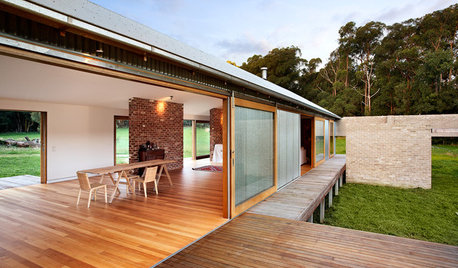

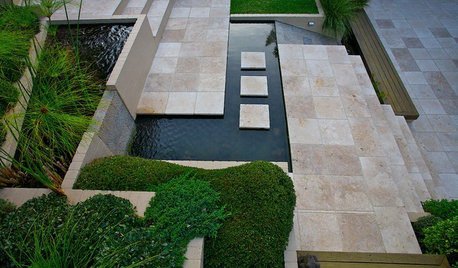
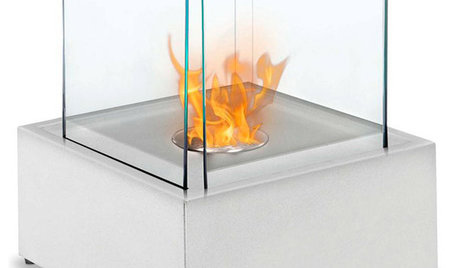
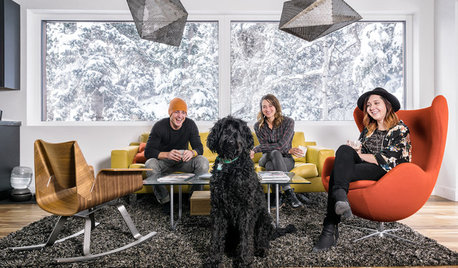

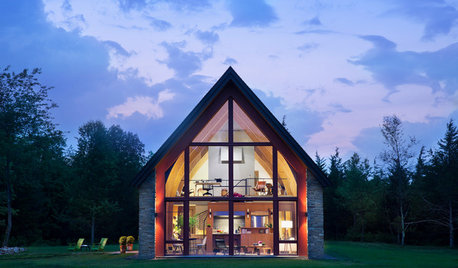
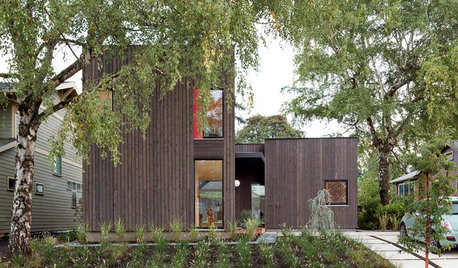

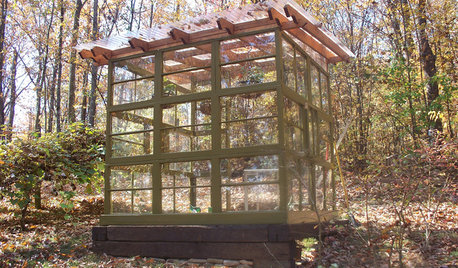








socalnolympia